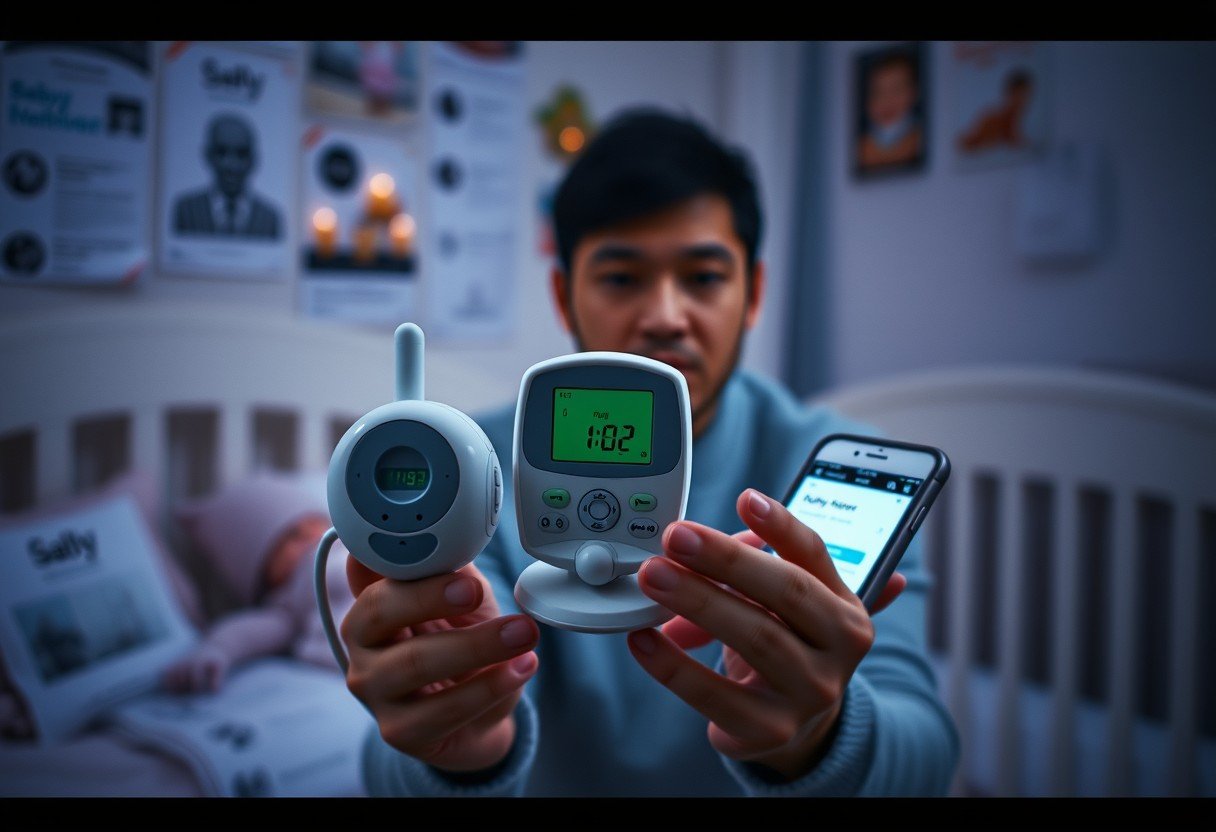Angelcare baby monitors offer parents valuable peace of mind, but issues like signal drops or false alarms can cause frustration. Understanding why these problems occur is the first step toward fixing them. This guide provides simple, practical solutions for common Angelcare monitor challenges, helping you restore a reliable connection to your little one and ensure their safety without unnecessary stress.
Troubleshooting Connectivity and Wi-Fi Problems
Nothing is more frustrating than a baby monitor that keeps losing its connection. These issues often stem from interference from other electronics, physical barriers like thick walls, or the distance between the baby unit and the parent unit. A weak or unstable Wi-Fi connection can also be the culprit for smart models.
A simple reset can often resolve temporary glitches and refresh the device’s connection. To do this, turn off both the monitor and the parent unit, unplug them from the power source, and wait for about a minute. After plugging them back in and turning them on, the connection should re-establish.
If a reset doesn’t work, it’s time to check your network. For Wi-Fi enabled monitors, ensure you are connected to the correct network and that it is functioning properly. Many baby monitors only operate on a 2.4GHz frequency band, so verify your router settings are compatible. You can also try these steps:
- Move the monitor and parent unit closer together to rule out range issues.
- Reposition your Wi-Fi router to a more central location in your home.
- Change the channel on your monitor through its settings to avoid interference from devices like cordless phones or microwaves.
- Check your router’s admin settings to ensure no security features, like MAC filtering, are blocking the monitor from connecting.
How to Stop False Alarms on Your Angelcare Monitor
A false alarm from your Angelcare monitor can jolt you out of a much-needed moment of rest, causing unnecessary panic. These alerts are often triggered not by an emergency, but by incorrect setup or placement, especially with models that feature movement sensor pads.
The most common cause is the baby rolling to a corner of the crib, away from the sensor’s detection area. The sensor pad might also be too sensitive or not sensitive enough. Proper placement and calibration are critical to distinguish between a real emergency and a simple shift in sleep position.
Start by checking the sensor pad’s placement. It should be on a completely flat, hard surface directly under the mattress. If your crib has a spring or slat base, place a hardboard between the base and the sensor pad. Also, ensure no other items, like toys or mobiles touching the crib, are creating vibrations that could interfere with the readings.
Next, calibrate the sensor’s sensitivity. Refer to your user manual for the specific instructions for your model. The goal is to set it sensitive enough to detect your baby’s subtle movements but not so sensitive that it picks up vibrations from outside the crib. Regularly re-calibrating the sensor can prevent false alarms as your baby grows.
Enhancing Your Monitor’s Range and Signal Strength
If you live in a larger home or one with thick walls, you might find your Angelcare monitor’s range is limited. A weak or dropping signal means you can’t confidently move around the house while your baby sleeps. Improving the signal often comes down to strategic placement and, in some cases, a little technological help.
To get the best possible signal, think about where you place the baby and parent units.
- Place the baby unit in a high location, like on a shelf, away from metal objects and other electronics.
- Keep the monitor at least three feet away from large furniture or walls that can block the signal.
- Try to maintain a clear line of sight between the baby and parent units whenever possible.
If placement adjustments aren’t enough, a range extender can be a game-changer. A range extender works by receiving your monitor’s signal and rebroadcasting it, effectively increasing its operational area. This is especially useful for multi-story homes. When choosing one, make sure it is compatible with your specific Angelcare model to ensure it integrates smoothly and provides a stable, reliable connection from anywhere in your home.
Maintenance Tips to Keep Your Monitor Working
Like any electronic device, your Angelcare baby monitor needs a bit of regular care to perform its best. Preventive maintenance helps you avoid common problems and extends the life of your monitor, ensuring it remains a reliable tool for your family.
A little preventive care goes a long way in ensuring your monitor remains reliable for years to come. Start by regularly checking the battery levels on both the parent and baby units. If you use rechargeable batteries, make sure they are holding a charge. If not, it’s time to replace them. For firmware, periodically check the Angelcare website or app for any updates, as these often include bug fixes and performance improvements.
Cleaning is also important. Use a soft, dry, or slightly damp cloth to wipe down the units. Avoid using harsh cleaning chemicals, as they can damage the plastic. Also, inspect the power cords and connections for any signs of wear or damage. Storing the monitor in a safe place when not in use will protect it from accidental damage.
When to Consider Alternative Baby Monitors
While Angelcare monitors are popular, they may not be the perfect fit for every family. If you continue to face issues or find that its features don’t meet your needs, it might be time to explore other options on the market. Brands like Nanit, Owlet, and Motorola offer different features that might be better suited to your lifestyle.
For example, if you’re interested in detailed analytics about your baby’s sleep patterns, a smart monitor like the Nanit might be ideal. If you want health monitoring features like heart rate and oxygen levels, the Owlet Smart Sock is a leading choice. The key is to identify what features matter most to you.
Comparing Popular Baby Monitor Brands
To help you decide, here is a quick comparison of some leading alternatives to Angelcare monitors.
| Brand | Key Features |
| Motorola | Two-way communication, night vision, remote pan and tilt camera |
| Nanit | Sleep tracking analytics, breathing motion monitoring, temperature and humidity sensors |
| Owlet | Heart rate and oxygen level monitoring, sleep tracking, app integration |
It’s crucial to carefully review these options to find the monitor that best suits your family’s specific needs. Whether you prioritize smart alerts, video quality, or health tracking, there is a product available that can provide the peace of mind you’re looking for.
Frequently Asked Questions
Why does my Angelcare monitor keep showing a weak signal?
A weak signal is usually caused by distance or interference. Try moving the parent unit closer to the baby’s room and keep both units away from other electronics like microwaves, routers, and cordless phones.
What is the best way to prevent false alarms with the movement sensor?
Ensure the sensor pad is on a hard, flat surface under the mattress. Calibrate the sensitivity according to the user manual and make sure no toys or mobiles are touching the crib, as they can create vibrations that confuse the sensor.
How do I reset my Angelcare baby monitor?
To perform a simple reset, turn off both the baby and parent units and unplug them from their power source. Wait for about 30-60 seconds before plugging them back in and turning them on again.
Can I use a Wi-Fi extender with my Angelcare monitor?
Yes, if you have a Wi-Fi-enabled Angelcare model, a range extender can significantly boost the signal in larger homes. Just be sure to choose an extender that is compatible with your home router and network.
What should I do if the audio on my monitor is unclear or intermittent?
First, check the volume settings on both units. If the problem continues, try changing the channel in the monitor’s settings to reduce interference. Also, ensure nothing is physically blocking the microphone on the baby unit.
How often should I replace the batteries in my monitor?
If you are using standard disposable batteries, replace them as soon as you notice performance issues. For rechargeable models, the batteries may need to be replaced every 1-2 years if they no longer hold a full charge.







Leave a Comment